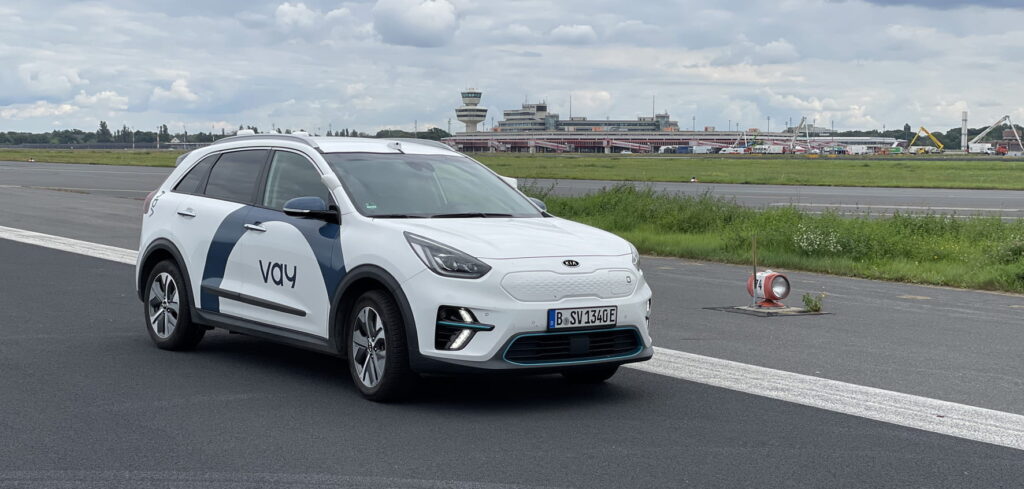Supported by TÜV SÜD, Vay Technology is conducting a range of tests on remote control systems to deliver to and collect autonomous cars from customers. The Berlin, Germany-based startup company is currently on track to launch what is claimed as the first teledriven fleet without onboard safety operators on public roads in Hamburg, Germany.
As Vay’s safety and security partner, TÜV SÜD’s automated driving experts are responsible for reviewing the autonomous delivery and collection concept in addition to conducting extensive tests and technical inspections for single vehicle approval. These tests focus on vehicle safety, functional safety, cybersecurity and wireless connectivity.
“Vay’s idea excited us from the very start, as it basically closes the gap between automated driving and car sharing. Our AV-Permit service package will help get Vay’s technology on the road,” said Julia Kronberger, project lead, TÜV SÜD. The AV-Permit service package is used by the experts to support the development of automated vehicles worldwide. The service package and its third-party expert reports will create the basis for single vehicle approval.
Within AV-Permit, TÜV SÜD’s teams conduct verification of vehicle safety, functional safety in accordance with ISO 26262 and cybersecurity in accordance with ISO/SAE 21434 and other standards.
“As the vehicle can be fully remote-controlled, cybersecurity is paramount in this case,” explained Mohamed Fares Abid, engineer automotive cybersecurity, TÜV SÜD. “Given this, Vay’s risk assessment identified the communication path between the vehicle and its telestation as critical. Verification that this communication and the connected systems are protected against cyberattacks is thus essential.”
So far, TÜV SÜD has been responsible for validating several Vay vehicles for teledriving operations under the scope of individual vehicle approval. Alongside design examination and vehicle tests, Vay’s vehicles have been subjected to extensive dynamic tests to verify driving functions in real-life scenarios. By conducting these tests, the pair aims to verify that the vehicle reacts as it should in each scenario. Furthermore, a detailed TÜV SÜD expert report on the vehicle’s functional safety and cybersecurity closes the regulatory gap for approval for road use.
When conducting tests in remote operation, the AV’s braking, steering and acceleration systems are controlled by a professionally trained teledriver. The teledriver is situated at a teledriving station; a replica of a driver’s cab consisting of a steering wheel, brake and accelerator pedals and a cockpit with screens. Through the use of the Vay-developed station, the teledriver can monitor traffic around the remote-controlled vehicle. During wireless teledriving, TÜV SÜD placed a focus on the radio connection and the potential hazards if a connection failure or external attack were to occur. If the wireless connection is interrupted (despite a built-in multilevel security and redundancy system) the vehicle moves into a fail-operational mode.
“We performed extensive threat and risk analyses based on internationally recognized industry standards,” commented Fabrizio Scelsi, co-founder, Vay. “They also included aspects such as manipulation of the radio connection with the vehicle and compliance with the pre-defined safety zone around the vehicle at all times.”
“Our international expertise in fields such as single vehicle approval, in particular for automated vehicles, makes us the number one partner for the realization of innovative ideas like Vay’s concept. And the TÜV SÜD octagon is visible proof for all that these vehicles have been tested by third-party specialists,” concluded Alexander Ersoy, head of automotive security and connectivity HAD, TÜV SÜD.


